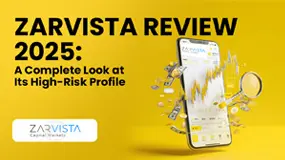Abstract:Somethings we all need to know here is that, trading is not what most people think it is. The Hollywood version of trading, where huge sums of money are made effortlessly by smiling traders in a matter of seconds, can often seem alien to anyone who trades for real.

Somethings we all need to know here is that, trading is not what most people think it is. The Hollywood version of trading, where huge sums of money are made effortlessly by smiling traders in a matter of seconds, can often seem alien to anyone who trades for real.
It‘s also changed structurally too, with trading now making a huge impact online. It can be done from home, with the same results the Wall Street guys get being available to the guy sitting in his living room in his jeans. That’s why we highly recommend you prepare before you trade. Take our premium Trading for Beginners course today.
The ups and downs
Trading in the stock market requires years of practice and thorough understanding of market dynamics to maximize gains. Unlike investing, where the holding period is long, trading involves frequent buying and selling of securities.
Among the several things that you should not do while trading is to trade under emotions. Emotional trading has several pitfalls, and doing so can result in significant capital loss. Here are reasons why emotions shouldn‘t cloud your trading activity. One aspect that can prove to be especially traumatic is the ’rollercoaster nature of trading.
This is true for home traders as well as the professionals on the exchanges. The psychological aspect of trading, where your brain has to deal with losing as well as winning, often within a matter of seconds, is the hardest part to get right.
Knowing how to manage your trading psychology and becoming a winning trader is vital. If you can‘t take the pressure, you won’t get far. And this is true no matter what your trading strategies are.
Your first step in gaining a trading mindset involves you, and mastering your own emotions. Once you step beyond yourself a little and look at trading objectively, youll have a better chance of surviving and thriving.
When your trading is profitable you feel like you are on top of the world, but when things go against you, it is a tall order to separate your emotions from your money.
Here are some practical tips to help you learn to be productive and control your emotions:
1. Learn Something New About Trading
Learning a new trading strategy can be a fun and profitable way to get out of an emotional trading rut. Maybe you have wanted to learn how Iron Condors and Credit Spreads operate, or maybe you have been curious about RSI and MACD indicators. There's no time like the present to block off an hour a day and learn about those topics.
2. Perform Some In-Depth Market Research
Sometimes trading gets emotional because you don't know what to do next. In that case, you may be in a rut, and that's okay!
Take a step back and dive into some topics that you may be curious about. If you make a concentrated effort to learn something new and in great detail, you can get your head back in the game, and jump back into your trading with some new perspective and confidence.
Since the market is perpetually evolving, there is always a facet that you don't know about, which could shed some light on why you are trading emotionally and assist in re-calibrating your efforts.
An easy way to spruce up your research is to find a fresh newsletter or investment authority that you have not heard before. You may find something that fundamentally changes the way you think about trading, or you may find something that you strongly disagree with.
Either way, learning something new about the market and seeing things from a new perspective will make you a more educated trader with a broader perception than before.
3. Paper Trade Until You Fall Over
If you have a new strategy that you want to deploy or want to use a new indicator, then you should paper trade it before committing real capital. Paper trading is not perfect, but it provides a controlled environment where you can be comfortable pushing the envelope with your trades without risking any capital.
4. Write a Trading/Business Plan
If you find yourself constantly wondering why you keep trading a certain way or your strategies keep falling short of your goals, now might be a great time to set some concrete trading objectives and write a business plan for yourself. Take some time to calculate and quantify what you are trying to achieve with each trade you make.
Are you hedging? Are you trying to capitalize on a big market movement? Are you scaling a position to decrease your average cost? These questions will help you to understand the 'why?' behind your trades.
Once you set your goals, create a business plan for your trading. A simple business plan includes a mission/vision statement, such as “The purpose of my trading is to enhance/replace my income by X date” or “I am trading to learn more about an industry that I am interested in and would like to profit from my knowledge.”
Now that your trading business has a stated direction, map out some milestones that will help you achieve your goals, such as smooth execution or becoming more familiar with different orders.
5. Using stop orders
Stop orders are very unique tools that have been designed to help both the busy trader as well as the emotional trader. But its biggest advantage is that it helps you take control of your greed when trading, or more specifically removes greed from the equation completely.
Essentially what these orders do is help you set a specific price point of a financial instrument and register it on the software as a place to either buy or sell something automatically.










